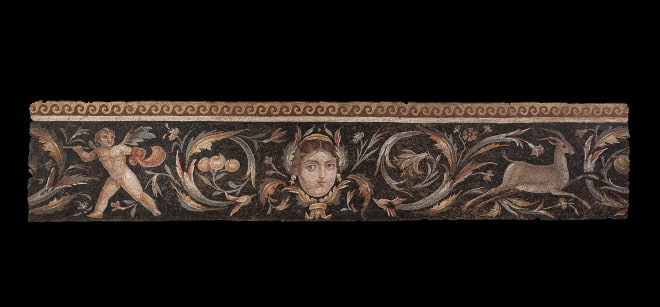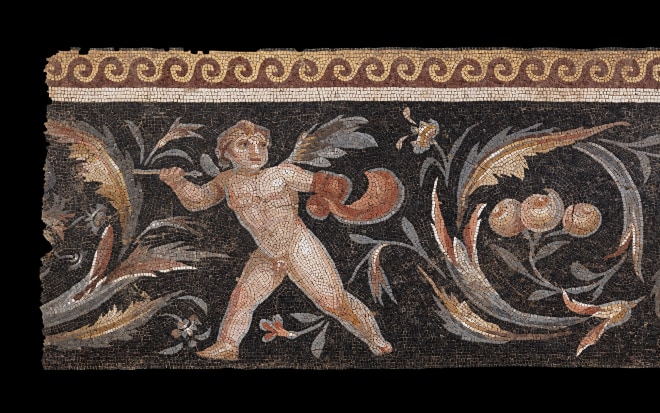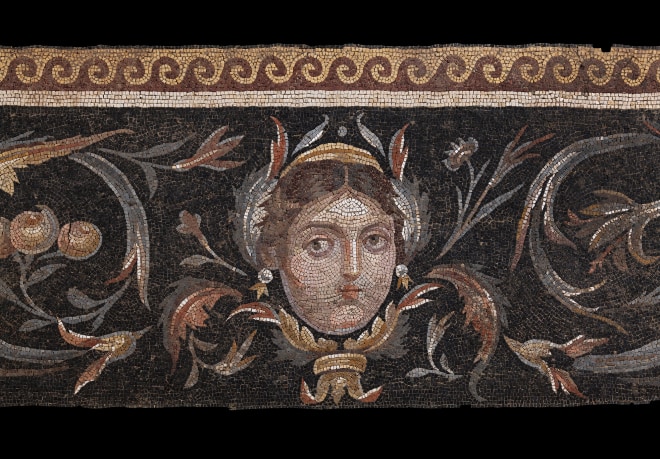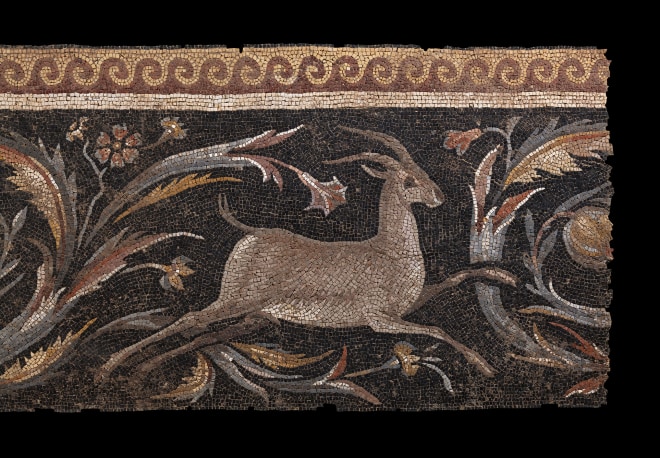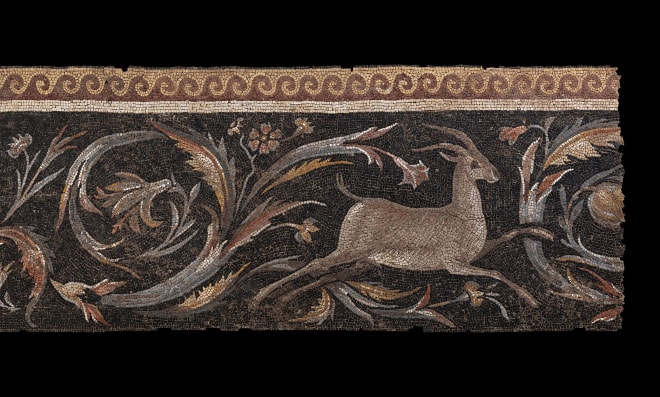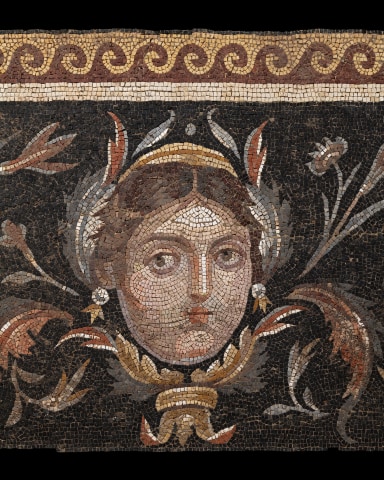Further images
Large mosaic fragment with red, yellow, white, brown, blue, and orange tesserae set against a background of black stone tesserae, showing Eros hunting a stag. Eros, positioned on the left, holds a red cloth in his left hand and a spear in his right. He looks over his left shoulder toward the stag at the far right, just as he prepares to launch his spear. The stag, leaping away in mid-flight, faces right, seemingly fleeing from Eros. At the centre of the composition is the head of a woman, possibly Artemis, adorned with earrings, a laurel wreath, and a foliate motif beneath her chin. The upper edge of the mosaic retains its original border, consisting of a white band topped by a running wave pattern in red and yellow tesserae. The black background is decorated with an elaborate scroll ornament, or rinceau, composed of flowers and fruit. Some tesserae are missing, particularly along the extremities, but the mosaic remains remarkably well-preserved. Despite minor losses, the stones retain a strong and vivid sense of colour.
Eros is typically depicted striking mortals and immortals with his deadly arrows, igniting their passions and desires. Here, however, we see him poised to hurl a spear at a fleeing stag, which attempts to escape its fate. The traditionally masculine and athletic theme of the hunt is humorously subverted by the presence of the chubby, seemingly harmless Eros. Yet, if the stag symbolises Artemis—as it so often does—this scene may serve as yet another allegory for the triumph of desire over chastity. In classical literature, many of Artemis' devoted maidens fell victim to the machinations of Aphrodite and Eros; for instance, the virginal Atalanta was ultimately bested in a footrace by Hippomenes, who won her hand only through the intervention of Aphrodite, offended by Atalanta’s rejection of her cult.
The mosaic’s stylised foliage and the rich, warm hues of the tesserae likely draw inspiration from North African workshops, reflecting the growing influence of provincial artistry on Roman mosaics of the 3rd and 4th centuries A.D. The panel’s relatively narrow height suggests it may have originally formed part of a decorative border within a larger floor mosaic. Notably, another border panel from the same composition was sold at Christie’s New York on 6th June 2013, lot 652.
Provenance
Private collection, Belgium; likely acquired in 1974Quintens collection, Belgium; acquired from the above in 1994, until 2024
